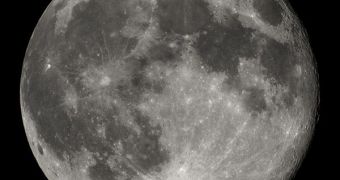Figuring out how life began on our planet is one of the primary goals in science, but the key to unlocking this mystery may lie on the Moon, researchers in the United Kingdom believe. They say that rocks from the early Earth were ejected to the Moon during an asteroid bombardment.
Dubbed the Late Heavy Bombardment, this was a period of time about 4 billion years ago when the innermost planets – Mars, Earth, Venus and Mercury – were battered by thousands of asteroids and meteorites that slammed into their surface.
These extremely violent events, which spanned some 300 million years, had numerous effects on the then-young planets, and one of them was the ejection of billions of tons of materials from each of them into outer space.
On Earth, some of that material may have made its way onto the Moon. This hypothesis is completely plausible, considering that Antarctica revealed meteorites that were proven to have come from Mars.
Therefore, it is entirely plausible to assume that the inner planets exchanged material during the Late Heavy Bombardment. The Earth and the Moon have have been engaged in these exchanges too.
According to experts from the University of London Birkbeck College School of Earth Sciences, the earthly material that made its way on the Moon may have landed there softly enough to retain some of the potential biological markers it may have contained.
The research team, led by experts Ian Crawford and Emily Baldwin, adds that such biomarkers couldn't have possibly survived here, due to extensive meteor impacts, wind and rain erosion, volcanic activity, earthquakes, and occupation of the habitat by other species.
In a series of computer simulations, the team showed that a piece of terrestrial material cast towards the Moon by an asteroid would impact the lunar surface at a speed of 2.5 kilometers per second or less.
At such temperature levels, “no part of the projectile even approached a peak pressure at which melting would be expected,” the investigators say, quoted by Daily Galaxy.
Unfortunately, this new theory will not be put to the test until humans return to the Moon, collect sample from numerous locations, and then return them to Earth for an in-depth analysis.
However, doing so might provide us with some amazing insight into the history of life on Earth.

 14 DAY TRIAL //
14 DAY TRIAL //